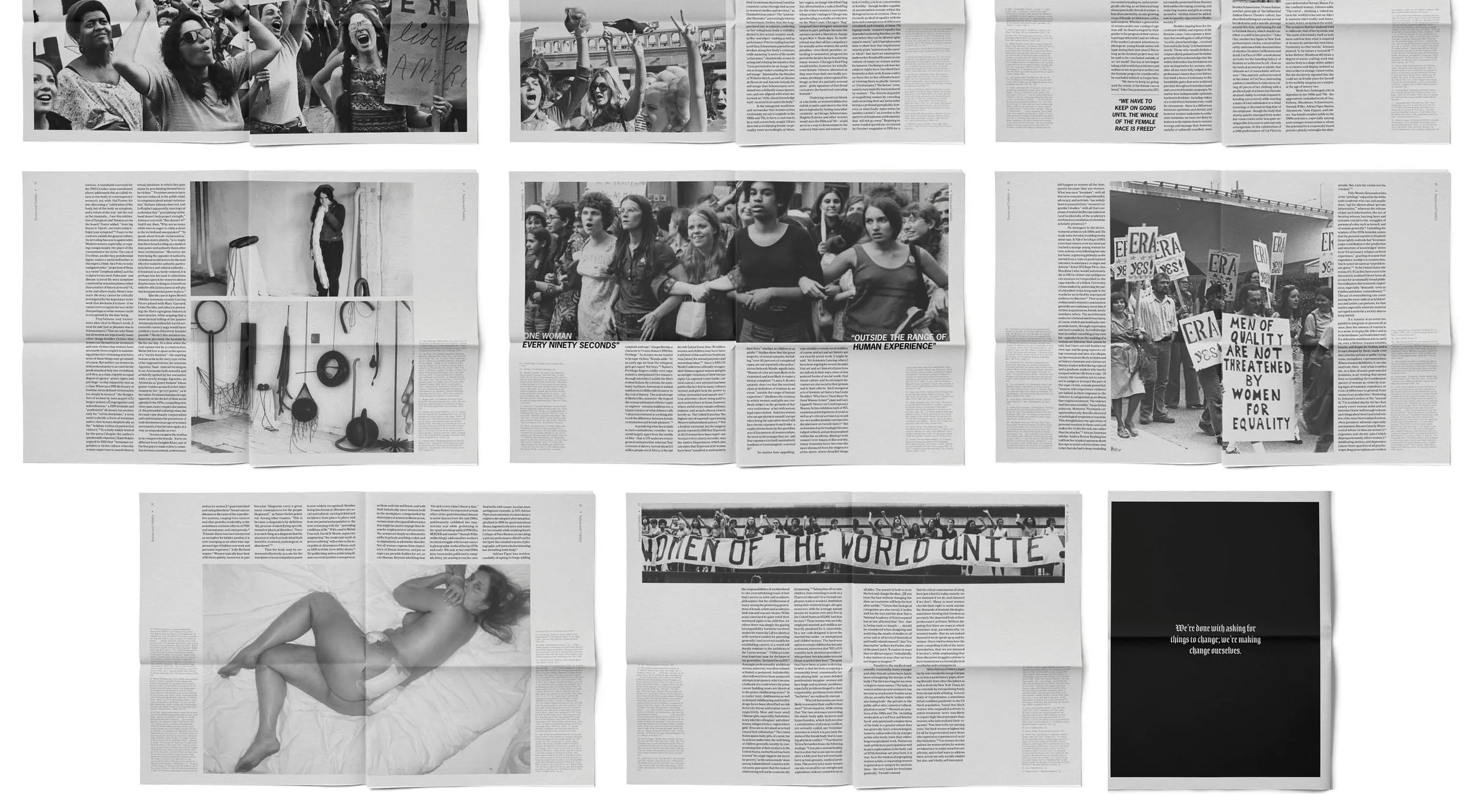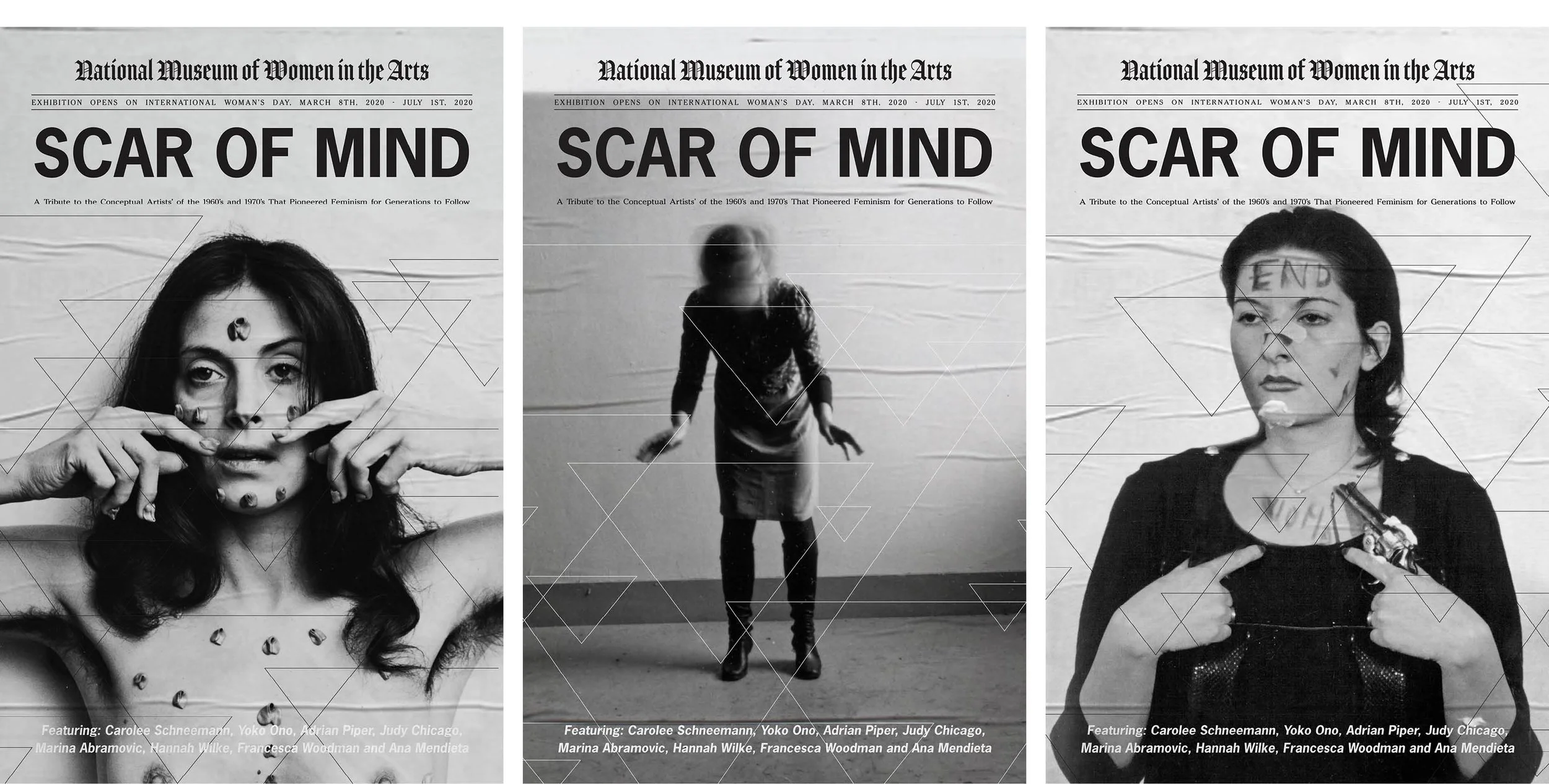
Throughout the 1960’s and 1970’s, the art world was still dominated by men. The adversity and discrimination from the boys club only fueled these eight female artists further into their craft. The world may not have been ready for them then, but today we honor and embrace these brave rebels for the fight they raised. Scar of Mind pays tribute to these trailblazers by giving them the front page recognition they originally deserved.
Scar of Mind’s editorial component took shape in two parts. Part one was found in a pocket behind the front cover. This pull out served as an unconventional table of contents where you can read bios on each artist, be directed to the pages their work is showcased and discover the emergence of feminist art through the feature article, “Normal Ills.”
While the pull out was inspired by 1960’s newspapers, and printed on a gray toned newsprint, the book itself stood for a different symbolic component: the lived experience. The book was printed on a light peach newsprint in order to mimic the intimate, delicate texture of skin. This was a direct ode to not just the art, but the women themselves: acknowledging that the only
thing that connected their art was that they each used their bodies, both as tools and canvases, to amplify their message and impact.
In the spirit of shared experience, Scar of Mind was meant to take to the cities and tour as a pop up art exhibit. Each gallery was intended to have multiple screens on each of the walls. Each screen would flip through an array of photographs and brief video documentation of the women’s work. The exhibit was rooted in demonstrating how all these women, autonomous from the next, were still united through their lived experiences as creative females within a patriarchal society.
Scar of Mind was adapted from a Yoko Ono quote referring to the mental and emotional scars we carry with us. These scars are invisible and yet so distinctive when it comes to the lived female’s experience. And thus, a faint triangle motif was crafted to honor these scars and to pay homage to our reproductive structures. The pattern symbolizes how independently one woman is both strong and complete, yet simultaneously and powerfully interconnected with the other women around them.
Scar of Mind










